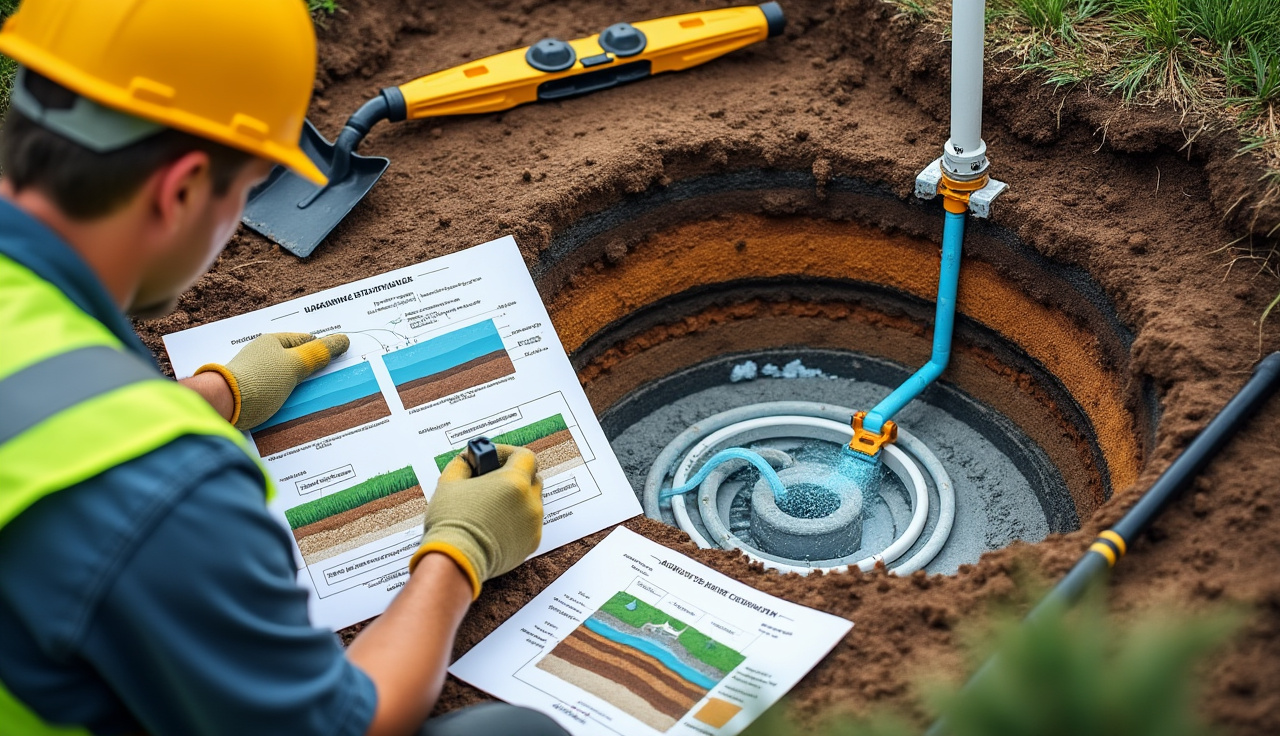Essential Guide to Successfully Install a Septic Tank: Unlock Efficiency and Reliability
Installing a septic tank is essential for homeowners in areas without municipal sewage systems. A septic tank collects and treats wastewater from your home, allowing for safe disposal in the ground. This guide will walk you through the entire process of installation, ensuring you understand everything from the different types of septic systems to local regulations.
By the end, you’ll be ready to make informed decisions about costs, design, and maintenance, paving the way for a sustainable and efficient wastewater management solution. Let’s dive in and get started on this important home project!
Table of Contents
Understanding Septic Systems

Types of Septic Systems
When you want to install a septic tank, it’s important to know that there are different types of septic systems. Each one has its special qualities to fit different soil conditions and the size of your property. For example, a conventional septic system works well in sandy soils, while an aerobic treatment unit can be great for areas with heavy clay. If your yard is small, a mound system may be the best choice because it doesn’t need a lot of space for the drain field.
Septic Tank Design
Now, let’s talk about how a septic tank works. A typical system includes three main parts: the tank, the drain field, and the soil absorption area. The tank collects wastewater and lets solids settle at the bottom. The liquid then flows to the drain field, where it seeps into the ground. The right tank size is crucial! It needs to be big enough to handle the waste produced by your household. For example, a family of four may need a larger tank than a couple living alone.
Environmental Impact
A well-designed septic system not only takes care of your waste but also protects the environment. When properly installed, it can help keep our groundwater clean by filtering out pollutants. Think of it as a natural way to manage waste without harming the earth. It’s important to choose eco-friendly options when you can, as they can minimize the environmental impact of your system.
Planning Your Installation
Local Regulations
Before you jump into the exciting process of installing a septic tank, it’s crucial to check the local regulations. Every area has rules set by the local health department. These rules ensure that your system is safe and meets public health standards. Don’t forget to get the necessary building permits. Skipping this step could lead to problems down the road!
Site Evaluation
To make sure your septic system works properly, you need to conduct a site evaluation. This involves a percolation test to check how well the soil absorbs water. If the soil isn’t suitable, your drain field may not work correctly, leading to drainage issues. It’s like giving your yard a health check-up before moving forward with the installation process. A certified installer can help you with this step, ensuring everything is set for a healthy system.
By understanding these basics, you’ll be well on your way to a successful septic tank installation!
The Installation Process
Cost of Septic Tank Installation
Installing a septic tank can be a big project, and the cost of septic tank installation varies a lot. Typically, homeowners can expect to spend anywhere from $3,000 to $10,000. This cost includes materials like the tank, drain field, and pipes, as well as labor for the certified installer.
Additionally, there may be extra fees for permits or inspections required by your local health department. For example, if you need a percolation test to check if your soil can absorb wastewater, that might add to your total cost. It’s smart to get quoted prices from several contractors to find the best deal.
Installation Timeline
The installation process can take several days, depending on various factors. First, you’ll need a site evaluation, which usually takes a day. This checks if your land is suitable for a septic system. Then comes the preparation phase, where the installer digs the hole and gets everything ready. This might take about 1 to 2 days.
After that, the tank is placed, and the drain field is installed. This stage can take another day or two. Finally, you’ll have a final inspection, which is essential to ensure everything is done correctly. Overall, expect the entire process to take about a week, from start to finish.
Install a Septic Tank: Maintenance and Troubleshooting
Long-Term Care
Once your septic system is up and running, regular maintenance is key to keeping it healthy. Homeowners should pump out the septic tank every 3 to 5 years to prevent backups. It’s also important to watch for septic tank failure signs like slow drains or a bad smell. Ignoring these issues can lead to expensive repairs and a messy situation. Regular care helps avoid drainage issues and keeps your system functioning smoothly.
System Inspection and Upgrades Install a Septic Tank
Every few years, it’s wise to schedule a system inspection. A professional can check for any potential problems and suggest system upgrades if needed. This could mean anything from improving your drain field to replacing old pipes.
Upgrading your system can increase its longevity and efficiency, making sure it works well for many years. Regular check-ups not only help prevent system failure but also protect the environment by ensuring proper waste management.
Next Steps for Homeowners Install a Septic Tank
DIY vs. Professional Installation
As a homeowner, deciding whether to install a septic tank yourself or hire a certified installer can be tricky. If you’re handy and love tackling projects, you might consider a DIY installation.
However, think carefully about the complexity of the process. If you’re unsure about local regulations, or if your soil might pose challenges, it’s wise to call in a professional. They can ensure your system complies with building permits and federal guidelines, which is vital for avoiding future problems.
For example, if your land requires a percolation test to check how well your soil absorbs water, a professional will handle this smoothly. On the flip side, if you’re confident in your skills and the requirements are straightforward, a DIY approach can save you money! Just make sure you understand the installation process and have all the necessary materials.
Septic Tank Alternatives
If you’re looking for eco-friendly waste management solutions, consider septic tank alternatives. Options like a composting toilet or a grease trap can minimize environmental impact. These systems treat waste without needing a traditional septic system and can be a great fit for smaller homes or cabins.
For example, a composting toilet can convert waste into usable compost, reducing your reliance on water and lessening the load on the septic system. This might be a good option if you’re committed to sustainable living!
Landscaping Considerations
When it comes to landscaping around your septic system, you want to create a beautiful yard while taking care of your drain field. Avoid planting deep-rooted trees or shrubs above the system, as their roots can cause drainage issues or even damage the septic tank.
Instead, think about planting grass or flowers that don’t need deep roots. This keeps your system safe while adding color and life to your property. Remember, proper landscaping not only beautifies your home but also supports the longevity of your septic system.
By following these tips, you can make informed decisions about your septic system and enjoy a healthy, well-maintained home!
Wrapping Up Your Septic Journey
Now that you’re equipped with all the knowledge you need to install a septic tank, it’s time to take the next step. Whether you’re in Orange County, Rockland County, or Sullivan County, our team at United Sewer & Septic is here to help you navigate the installation process with ease and confidence. Ready to get started?
Request your estimate now! Fill out the form on our homepage and let us assist you in creating a sustainable wastewater management solution tailored to your needs. Don’t wait—your efficient septic system awaits!

